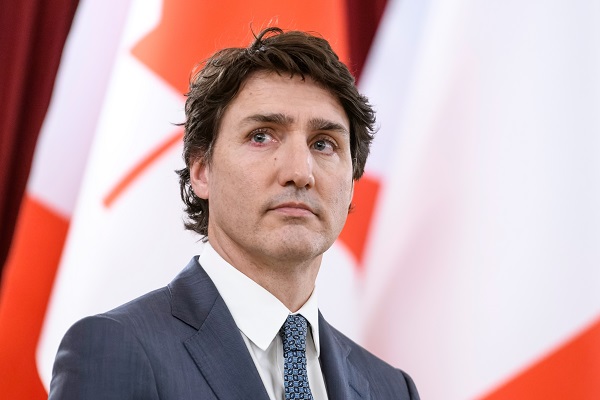Alberta
Free Alberta Strategy trying to force Trudeau to release the pension calculation


Just over a year ago, Alberta Finance Minister Nate Horner unveiled a report exploring the potential risks and benefits of an Alberta Pension Plan.
The report, prepared by pension analytics firm LifeWorks – formerly known as Morneau Shepell, the same firm once headed by former federal Finance Minister Bill Morneau – used the exit formula outlined in the Canada Pension Plan Act to determine that if the province exits, it would be entitled to a large share of CPP assets.
According to LifeWorks, Alberta’s younger, predominantly working-class population, combined with higher-than-average income levels, has resulted in the province contributing disproportionately to the CPP.
The analysis pegged Alberta’s share of the CPP account at $334 billion – 53% of the CPP’s total asset pool.
We’ve explained a few times how, while that number might initially sound farfetched, once you understand that Alberta has contributed more than it’s taken out, almost every single year CPP has existed, while other provinces have consistently taken out more than they put in and technically *owe* money, it starts to make more sense.
But, predictably, the usual suspects were outraged.
Media commentators and policy analysts across the country were quick to dismiss the possibility that Alberta could claim such a significant portion. To them, the idea that Alberta workers had been subsidizing the CPP for decades seemed unthinkable.
The uproar prompted an emergency meeting of Canada’s Finance Ministers, led by now-former federal Finance Minister Chrystia Freeland. Alberta pressed for clarity, with Horner requesting a definitive number from the federal government.
Freeland agreed to have the federal Chief Actuary provide an official calculation.
If you think Trudeau should release the pension calculation, click here.
Four months later, the Chief Actuary announced the formation of a panel to “interpret” the CPP’s asset transfer formula – a formula that remains contentious and could drastically impact Alberta’s entitlement.
(Readers will remember that how this formula is interpreted has been the matter of much debate, and could have a significant impact on the amount Alberta is entitled to.)
Once the panel completed its work, the Chief Actuary promised to deliver Alberta’s calculated share by the fall. With December 20th marking the last day of fall, Alberta has finally received a response – but not the one it was waiting for:
“We received their interpretation of the legislation, but it did not contain a number or even a formula for calculating a number,” said Justin Brattinga, Horner’s press secretary.
In other words, the Chief Actuary did the complete opposite of what they were supposed to do.
The Chief Actuary’s job is to calculate each province’s entitlement, based on the formula outlined in the CPP Act.
It is not the Chief Actuary’s job to start making up new interpretations of the formula to suit the federal government’s agenda.
In fact, the idea that the Chief Actuary spent all this time working on the issue, and didn’t even calculate a number is preposterous.
There’s just no way that that’s what happened.
Far more likely is that the Chief Actuary did run the numbers, using the formula in the CPP Act, only for them – and the federal government – to realize that Alberta’s LifeWorks calculation is actually about right.
Cue panic, a rushed attempt to “reinterpret” the formula, and a refusal to provide the number they committed to providing.
In short, we simply don’t believe that the Chief Actuary didn’t, you know, “actuarialize” anything.
For decades, Alberta has contributed disproportionately to the CPP, given its higher incomes and younger population.
Despite all the bluster in the media, this is actually common sense.
A calculation reflecting this reality would not sit well with other provinces, which have benefited from these contributions.
By withholding the actual number, Ottawa confirms the validity of Alberta’s position.
The refusal to release the calculation only adds fuel to the financial firestorm already underway in Ottawa.
Albertans deserve to know the truth about their contributions and entitlements.
We want to see that number.
If you agree, and want to see the federal government’s calculation on what Alberta is owed, sign our petition – Tell Trudeau To Release The Pension Calculation:
Once you’ve signed, send this petition to your friends, family, and all Albertans.
Thank you for your support!
Regards,
The Free Alberta Strategy Team
Alberta
Red Deer Justice Centre Grand Opening: Building access to justice for Albertans

The new Red Deer Justice Centre will help Albertans resolve their legal matters faster.
Albertans deserve to have access to a fair, accessible and transparent justice system. Modernizing Alberta’s courthouse infrastructure will help make sure Alberta’s justice system runs efficiently and meets the needs of the province’s growing population.
Alberta’s government has invested $191 million to build the new Red Deer Justice Centre, increasing the number of courtrooms from eight to 12, allowing more cases to be heard at one time.
“Modern, accessible courthouses and streamlined services not only strengthen our justice
system – they build safer, stronger communities across the province. Investing in the new Red Deer Justice Centre is vital to helping our justice system operate more efficiently, and will give people in Red Deer and across central Alberta better access to justice.”

Government of Alberta and Judiciary representatives with special guests at the Red Deer Justice Centre plaque unveiling event April 22, 2025.
On March 3, all court services in Red Deer began operating out of the new justice centre. The new justice centre has 12 courtrooms fully built and equipped with video-conference equipment to allow witnesses to attend remotely if they cannot travel, and vulnerable witnesses to testify from outside the courtroom.
The new justice centre also has spaces for people taking alternative approaches to the traditional courtroom trial process, with the three new suites for judicial dispute resolution services, a specific suite for other dispute resolution services, such as family mediation and civil mediation, and a new Indigenous courtroom with dedicated venting for smudging purposes.
“We are very excited about this new courthouse for central Alberta. Investing in the places where people seek justice shows respect for the rights of all Albertans. The Red Deer Justice Centre fills a significant infrastructure need for this rapidly growing part of the province. It is also an important symbol of the rule of law, meaning that none of us are above the law, and there is an independent judiciary to decide disputes. This is essential for a healthy functioning democracy.”
“Public safety and access to justice go hand in hand. With this investment in the new Red Deer Justice Centre, Alberta’s government is ensuring that communities are safer, legal matters are resolved more efficiently and all Albertans get the support they need.”
“This state-of-the-art facility will serve the people of Red Deer and surrounding communities for generations. Our team at Infrastructure is incredibly proud of the work done to plan, design and build this project. I want to thank everyone, at all levels, who helped make this project a reality.”
Budget 2025 is meeting the challenge faced by Alberta with continued investments in education and health, lower taxes for families and a focus on the economy.

Quick facts
- The new Red Deer Justice Centre is 312,000 sq ft (29,000 m2). (The old courthouse is 98,780 sq ft (9,177 m2)).
- The approved project funding for the Red Deer Justice Centre is about $191 million.
Alberta
CPP another example of Albertans’ outsized contribution to Canada

From the Fraser Institute
By Tegan Hill
Amid the economic uncertainty fuelled by Trump’s trade war, its perhaps more important than ever to understand Alberta’s crucial role in the federation and its outsized contribution to programs such as the Canada Pension Plan (CPP).
From 1981 to 2022, Albertan’s net contribution to the CPP—meaning the amount Albertans paid into the program over and above what retirees in Alberta received in CPP payments—was $53.6 billion. In 2022 (the latest year of available data), Albertans’ net contribution to the CPP was $3.0 billion.
During that same period (1981 to 2022), British Columbia was the only other province where residents paid more into the CPP than retirees received in benefits—and Alberta’s contribution was six times greater than B.C.’s contribution. Put differently, residents in seven out of the nine provinces that participate in the CPP (Quebec has its own plan) receive more back in benefits than they contribute to the program.
Albertans pay an outsized contribution to federal and national programs, including the CPP because of the province’s relatively high rates of employment, higher average incomes and younger population (i.e. more workers pay into the CPP and less retirees take from it).
Put simply, Albertan workers have been helping fund the retirement of Canadians from coast to coast for decades, and without Alberta, the CPP would look much different.
How different?
If Alberta withdrew from the CPP and established its own standalone provincial pension plan, Alberta workers would receive the same retirement benefits but at a lower cost (i.e. lower CPP contribution rate deducted from our paycheques) than other Canadians, while the contribution rate—essentially the CPP tax rate—to fund the program would likely need to increase for the rest of the country to maintain the same benefits.
And given current demographic projections, immigration patterns and Alberta’s long history of leading the provinces in economic growth, Albertan workers will likely continue to pay more into the CPP than Albertan retirees get back from it.
Therefore, considering Alberta’s crucial role in national programs, the next federal government—whoever that may be—should undo and prevent policies that negatively impact the province and Albertans ability to contribute to Canada. Think of Bill C-69 (which imposes complex, uncertain and onerous review requirements on major energy projects), Bill C-48 (which bans large oil tankers off B.C.’s northern coast and limits access to Asian markets), an arbitrary cap on oil and gas emissions, numerous other “net-zero” targets, and so on.
Canada faces serious economic challenges, including a trade war with the United States. In times like this, it’s important to remember Alberta’s crucial role in the federation and the outsized contributions of Alberta workers to the wellbeing of Canadians across the country.
-

 2025 Federal Election2 days ago
2025 Federal Election2 days agoStudy links B.C.’s drug policies to more overdoses, but researchers urge caution
-

 International2 days ago
International2 days agoPope Francis Got Canadian History Wrong
-

 Business2 days ago
Business2 days agoIs Government Inflation Reporting Accurate?
-

 2025 Federal Election2 days ago
2025 Federal Election2 days agoCarney’s Hidden Climate Finance Agenda
-

 2025 Federal Election2 days ago
2025 Federal Election2 days agoWhen it comes to pipelines, Carney’s words flow both ways
-

 Censorship Industrial Complex2 days ago
Censorship Industrial Complex2 days agoIs free speech over in the UK? Government censorship reaches frightening new levels
-

 2025 Federal Election1 day ago
2025 Federal Election1 day agoPolls say Canadians will give Trump what he wants, a Carney victory.
-

 2025 Federal Election1 day ago
2025 Federal Election1 day agoThe Anhui Convergence: Chinese United Front Network Surfaces in Australian and Canadian Elections





